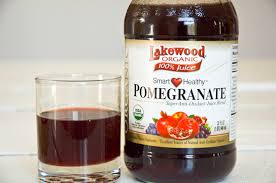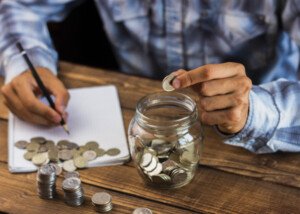
Can drinking huge amounts of juice daily lead to insulin resistance?
Are you a big juice drinker and wondering if this might cause insulin resistance, a harbinger of type 2 diabetes?
We grow up hearing how good juice is for us, and though juice contains antioxidants, it also contains sugar in the form of fructose. This is natural sugar.
However, there’s a problem here. Fructose, when eaten in its natural state — with whole fruit — gets metabolized nicely by the body, namely because the fruit’s fiber slows the absorption of this sugar.
Juice is minus most, if not all that fiber, so now we have fructose being consumed in its unnatural state.
Instead of it going to the muscles for energy, it goes to the liver. Enough sugar going to the liver can result in problems, such as “fatty liver.”
So then, can drinking a lot of juice cause insulin resistance or a prediabetic state?
“Too many calories can cause insulin resistance, whether from fruit, fruit juice or other foods,” says Craig Stump, former chief of the UA Division of Endocrinology, Diabetes and Metabolism (2006 to 2016), University of Arizona, Southern Arizona VA Healthcare System.
Dr. Stump continues, Fruit juices do tend to be calorically dense (i.e., it is easy to add a fair number of calories to the diet by drinking too much).
“In our clinics for obese children and adolescents we ask them to abstain from all caloric beverages in an attempt to reduce overall caloric intake.”
This also depends on the kind of fruit juice. Some fruit juices are naturally lower in sugar than others.
For example, an eight ounce glass of juice extracted from fresh blueberries does not contain as much sugar as an eight ounce glass of juice extracted from oranges.
On the other hand, watch out for juices that come in bottles, as oftentimes, these have added sugars.
Stay away from juices that are marketed towards “moms” of young kids; these often contain artificial colors and other synthetic chemicals.
Dr. Stump says, “I think huge repeated spikes in sugar (juice, soda, Gatorade, etc.) and corresponding large spikes in insulin could contribute to insulin resistance.
“However, insulin resistance is not a straightforward diagnosis in people who are not injecting insulin.
“It can be estimated with a HOMA (fasting insulin and glucose measure) or an oral glucose tolerance test, but these are not perfect in an individual patient (better for looking at larger groups of individuals).
“A high triglyceride and low HDL can also provide evidence for insulin resistance.
“It can only be quantified with certainty in the laboratory with a euglycemic-hyperinsulinemic clamp procedure (not done clinically).”
When you hear about the epidemic of prediabetes among America’s kids, these are kids who are sedentary, overweight and often have a poor cholesterol profile.
They may be drinking lots of juice, but along with the juice, plenty of sugary sodas, ice cream, cookies and candy.
A healthy active adult should feel free to drink juice, but make it organic with no sugar added.
Optimally, juice fruit at home to ensure that you are getting a 100 percent natural beverage.
But don’t go crazy with juice consumption, as it does indeed cause significant blood sugar spikes (fructose is rapidly absorbed into the bloodstream, causing the pancreas to go overboard pumping out insulin to lower the blood sugar level.
If this pattern occurs often enough, the pancreas becomes overworked and your body’s cells may become less efficient at utilizing the sugar that the insulin brings to them for energy. This is how insulin resistance develops.)
The healthiest way to consume juice is in solid form: in the form of fruit, to get the fiber that goes with it.
And no, taking a fiber pill with a liter of juice won’t cut it.
Restricting simple carbohydrates (i.e., eat apples instead of apple juice; whole-grain bread instead of white; wild rice instead of white), plus rigorous exercise and weight control, will go a remarkable way in preventing insulin resistance.

 research interests included insulin resistance resulting from physical inactivity, obesity and the metabolic syndrome, and identifying biological markers to predict progression of diabetes. Dr. Stump passed away in May 2019 after a brief illness.
research interests included insulin resistance resulting from physical inactivity, obesity and the metabolic syndrome, and identifying biological markers to predict progression of diabetes. Dr. Stump passed away in May 2019 after a brief illness.
























